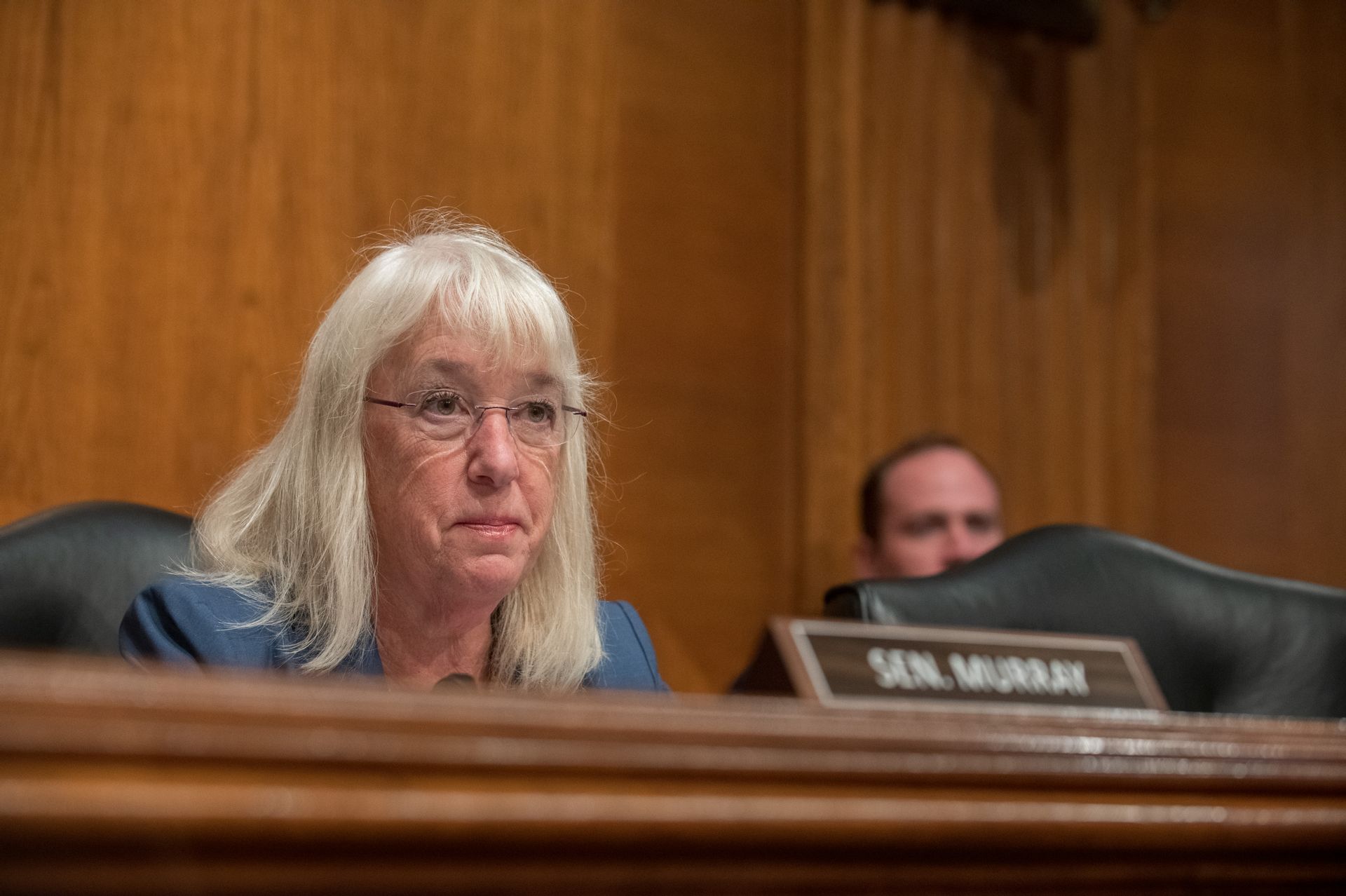ICYMI: Senators Murray and Manchin, Representative Smith Reintroduce Legislation to Expand Worker’s Compensation for Toxic Exposure at Hanford and Other Nuclear Sites – MORE HERE
(Washington, D.C.) – Today, U.S. Senator Patty Murray (D-WA) issued the following statement, calling for passage of her Toxic Exposure Safety Act in light of the disappointing Supreme Court opinion that struck down Washington state’s bipartisan state law designed to make it easier for workers to access the compensation benefits they earned when they develop certain illnesses from working at a site contaminated with radioactive waste. In 2022, Washington state passed Senate Bill 5890, that would improve access to compensation and benefits for radioactive waste site workers; as a result of that law, Hanford workers are still protected, and the 2022 law has not been challenged by the Biden Administration.
Murray’s Toxic Exposure Safety Act would ensure cleanup workers at the Hanford Nuclear Site and other Department of Energy (DOE) environmental management sites can more easily claim worker’s compensation benefits when they suffer from certain medical conditions as a result of exposure to toxic substances. Murray reintroduced her Toxic Exposure Safety Act with Senator Joe Manchin (D-WV) and U.S. Representative Adam Smith (D, WA-09) in March of 2021.
“It’s critical to me that Hanford workers are protected and that we make it easy for them to get the care and support they are entitled to—in light of today’s disappointing Supreme Court opinion, passing my Toxic Exposure Safety Act is all the more important,” said Senator Murray. “My legislation takes the right steps to ensure Hanford workers and those at other nuclear clean-up sites can obtain the full benefits they’re entitled to when they’ve contracted illnesses as a result of workplace exposure. This is just the right thing to do—and we need to get this done. As a voice for Hanford workers in the Senate, I will keep fighting to get this legislation to President Biden’s desk as soon as possible.”
Senator Murray and Representative Smith originally introduced the Toxic Exposure Safety Act in July of 2020 after the Seattle Times ran an investigative story profiling a worker who suffered from seizures after being exposed to toxic substances at the Plutonium Finishing Plant on the Hanford site, as well as the financial problems the worker encountered following their diagnosis.
Currently, Hanford workers can file for worker’s compensation claims when they have health issues through both the Washington state Department of Labor and Industries and DOE’s third-party insurer, Penser. The Toxic Exposure Safety Act seeks to make such claims at the federal level easier to access, and allow Hanford workers and workers at similar DOE sites to collect the full worker’s compensation benefits they’re entitled to. The Energy Employees Occupational Illness Compensation Program Act (EEOICPA) provides cash benefits and medical coverage to civilian employees who became ill as a result of exposure to radiation or toxic substances while working in the nuclear weapons industry EEOICPA is administered by the Department of Labor (DOL), Office of Workers’ Compensation Programs (OWCP).
The Toxic Exposure Safety Act would expand covered employees and covered illnesses under Part E to specifically include employees exposed to toxic substances at cleanup sites. EEOICPA Part E provides cash and medical benefits for DOE contractor and subcontractor employees who contracted an illness or died as a result of exposure to any toxic substance, as well as their eligible survivors. A person is eligible for Part E benefits if it is “at least as likely as not” that exposure to a toxic substance at a DOE facility caused, contributed to, or aggravated the worker’s illness or death.
Because toxic exposures at DOE sites have been understudied, and without sufficient clinical and epidemiological research there is no way to create an accurate causal correlation for EEOICPA Part E, similar to what has been effectively established for Part B of the program, which involves radiological exposures. As a result of the lack of this knowledge, federal law provides very little remedy to workers who suffer illness from these toxic exposures. To that end, the Toxic Exposure Safety Act of 2020 would amend Part E of the EEOICPA to establish a presumption of occupational disease exposures, create a research program to determine exposure-disease correlation, and direct the National Academy of Sciences to evaluate scientific evidence regarding chemical exposures—making it easier for Hanford clean-up workers and workers at other DOE nuclear clean-up sites to claim federal worker’s compensation benefits.
###


